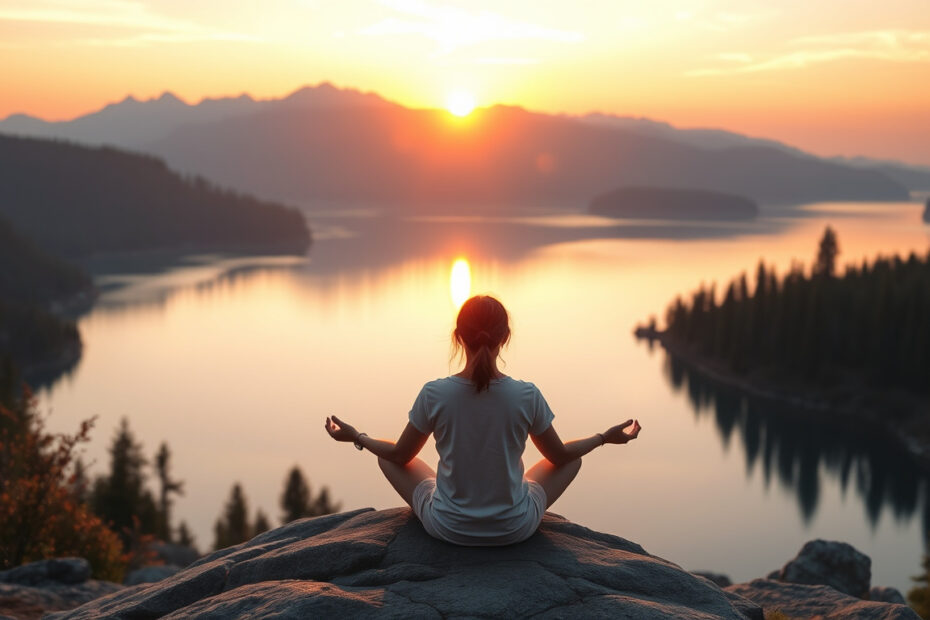🌟 Daily Awakening Quiz 🌟
In today’s fast-paced world, finding inner peace and maintaining mental clarity can be challenging. That’s where meditation techniques come in. These proven methods are designed not only to calm the mind but also to enhance overall wellbeing. Whether you’re a beginner or have some experience, adopting effective meditation techniques can transform your mental landscape and promote a healthier, more balanced lifestyle.
Understanding Meditation Techniques and Their Benefits
Meditation is more than just sitting quietly; it’s a deliberate practice of focusing your attention and eliminating the stream of jumbled thoughts that may crowd your mind. Various meditation techniques offer different pathways to achieving this mental state. Engaging regularly in meditation has been linked to numerous mental and physical health benefits, including reduced stress, improved concentration, and better emotional stability.
Scientific studies confirm that meditation’s benefits extend to lowering blood pressure, boosting the immune system, and decreasing symptoms of anxiety and depression (source). By exploring multiple meditation techniques, you can discover the ones that resonate with you and suit your lifestyle.
Popular Meditation Techniques to Try
Here’s a list of some of the most effective and widely practiced meditation techniques to get you started:
-
Mindfulness Meditation
This technique involves paying close attention to your present experience, accepting thoughts and feelings without judgment. It enhances awareness and helps you stay grounded in the present moment. -
Loving-Kindness Meditation (Metta)
Focused on cultivating compassion and kindness towards yourself and others, this practice promotes positive emotions and reduces negative feelings. -
Transcendental Meditation
Involving the silent repetition of a mantra, this technique is designed to help the mind settle into a state of restful alertness. -
Body Scan Meditation
This involves gradually focusing attention on different parts of the body, promoting deep relaxation and increased body awareness. -
Guided Visualization
Using mental imagery often developed with the aid of an instructor or recording, this technique encourages the mind to focus on peaceful and positive scenarios.
Each technique offers distinct advantages and can be practiced in as little as 5 to 20 minutes daily to start experiencing meaningful changes.

How to Choose the Right Meditation Technique for You
Selecting the appropriate meditation technique depends on your personal preferences, goals, and lifestyle. Here are a few considerations to help guide your choice:
- Your goals: Are you looking to reduce stress, improve focus, enhance self-love, or manage pain? Different techniques target specific needs.
- Your personality: Some techniques suit people who prefer structure (like transcendental meditation), while others favor open awareness (like mindfulness).
- Time availability: Some methods require more consistent practice or guidance, while others can be done independently with minimal time.
- Guidance and comfort: New meditators might benefit from guided sessions, whereas experienced practitioners might prefer silent or mantra-based meditation.
Experimenting with different meditation techniques can clarify what works best for your mind and schedule.
Steps to Start a Meditation Practice Today
Starting a meditation routine may feel overwhelming, but by following these simple steps, you can make it a sustainable and rewarding habit:
- Set a consistent time and place. Choose a quiet spot and a regular time each day to meditate.
- Start small. Begin with 5 to 10 minutes and gradually increase time as you get comfortable.
- Focus on your breath. Use your breathing as an anchor to maintain attention.
- Use guided meditation apps or videos if you need assistance to stay on track.
- Stay patient and non-judgmental. It’s normal for thoughts to arise; acknowledge them and gently return to your object of focus.
Consistency is key. Over time, meditation techniques can help you build mental resilience and emotional balance.
Common Challenges and Solutions in Meditation
Even with the best meditation techniques, some challenges can arise. Here are common obstacles and tips to overcome them:
- Restless mind: Try focusing on your breath or a mantra to anchor your mind.
- Physical discomfort: Adjust your posture or use cushions to enhance comfort.
- Lack of time: Incorporate short meditations during breaks or before sleep.
- Skepticism: Remember that benefits build over time; give yourself patience to experience results.
By addressing these challenges, meditation becomes a more accessible and enjoyable practice.
FAQ About Meditation Techniques
Q1: What are some simple meditation techniques for beginners?
A1: Beginners often find mindfulness meditation and guided visualization helpful because they are straightforward and require little prior experience. Starting with short sessions and using meditation apps can ease beginners into the practice.
Q2: How frequently should I practice meditation techniques to see benefits?
A2: Consistency is more important than duration. Practicing daily—even 5 to 10 minutes—can lead to noticeable improvements in wellbeing within a few weeks.
Q3: Can meditation techniques help with anxiety?
A3: Yes, meditation techniques such as mindfulness meditation and loving-kindness meditation have been shown to reduce anxiety by calming the nervous system and promoting a more positive mindset.
Conclusion: Embrace Meditation Techniques to Enhance Your Life
Meditation techniques are powerful tools that can transform your mind and significantly boost wellbeing. By dedicating just a few minutes each day to meditation practices suited to your needs, you can cultivate mindfulness, reduce stress, and foster emotional balance. Start exploring different meditation techniques today, and you may discover a new sense of clarity and peace that enriches every facet of your life. Take the first step—embrace meditation and unlock your mind’s potential for lasting wellbeing.
